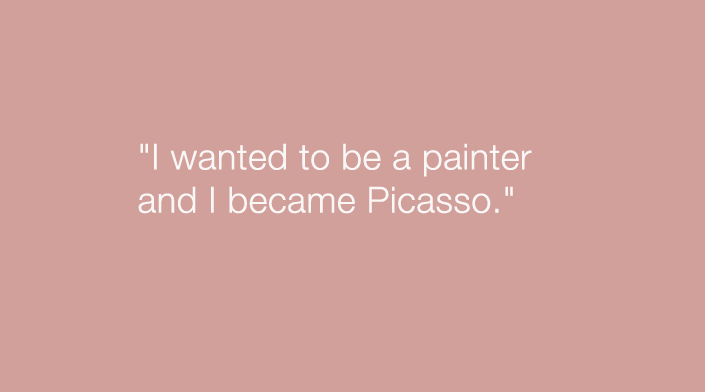Picasso’s universe: a vast solitude
Jean Cassou did not share this critical view of the artist he considered a genius. "Picasso has been criticized for his constant transformations. They have been seen as proof of his lack of unity, of his absence of personality, of his lack of genius, his vacuity. Only if one has never tasted the bitter delights of deep, indifferent solitude can one fail to understand that those constant transformations, in their solitary essence, are precisely what reveal Picasso's unity, his personality, his genius, his reality. We often talk about an artist's universe: his family context, the intimate landscape he always carries within him, where he finds himself and into which he retreats. Picasso has no universe. Perhaps his universe is a vast solitude where vegetation suddenly sprouts up only to die; or, more precisely, it's a series of solitudes each one of which is transformed into the next, replacing one other. And it appears that there was never any turning back."[1]
"I wanted to be a painter and I became Picasso."
Marcel Duchamp said of the artist: "With his grand vision of what a painter may be today, Picasso has managed to encompass Cubism and Surrealism, and even other forms we have not even named, which are called Picasso."[2] Throughout his life, from his academic training to the last years, observing the artists of the past —be they from ancient times, old masters, or modern painters— was Picasso's way of testing his pictorial language against masterpieces, renewing the art of quotation in an entirely personal way, pushing his own introspection to the limit. The author of a vast body of work, for his highly personal pieces, his variations based on the paintings of great masters, as well as the trivial everyday items he turned into precious objects or the experimentation he left in his wake, Picasso belongs to the universal heritage of art.
On the occasion of the Picasso & Les Femmes d’Alger exhibition in Berlin,[3] the curators and the authors of the catalog repositioned the series in the contemporary context. Amanda Beresford focused her essay on the influence of the artist's series on Algerian women. Surprisingly, several women authors have associated Picasso's paintings with their own demands and their feelings about their country's history, as a metaphor of the emancipation of Algerian women due to the war. Much though a feminist interpretation of Picasso's paintings may seem striking, as these women see it, the works are "expressions of the dominant culture of the past." According to Amanda Beresford, "the authors appropriate Picasso's paintings operating on the same principle as he did: they colonize Picasso just as he colonized Delacroix. In their quest to take control over the meaning of Picasso's paintings, they are attempting to extricate the images and identities of all the Women of Algiers from a history marked by cultural misinterpretations. In doing so, they challenge the ongoing legacy of Orientalist sexism and colonialism. By re-appropriating Picasso the conqueror, first Assia Djebar and later Anissa Bouayed and Ranjana Khanna brought on this transformation."[4] The point is not the interpretation of the intentions of Picasso, who is not the subject here, but rather the way in which feminist authors have seized on his approach. The works can be understood quite differently depending on the times when they are viewed, analyzed, and imbued with new meanings.
[1] Jean Cassou, La Création des mondes. Essais sur l’art. Paris, Les Éditions ouvrières, "Vivre son temps" collection, 1971, p. 7.
[2] Quoted by Bernard Marcadé in "C’est du Picasso !", Picasso, l’objet du mythe, Éditions de l’École nationale supérieure des Beaux-Arts, Paris, p. 229.
[3] The exhibition was held at the Nationalgalerie, Staatliche Museen zu Berlin, from May 21 to August 28, 2021.
[4] Amanda Beresford, in Picasso & Les Femmes d’Alger, exhibition catalog, Éditions Hirmer, p. 179-181.





 Summary
Summary